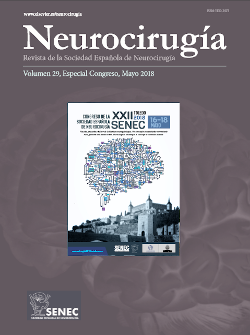P0292 - ADULT OCCULT SACRAL MENINGOCELE: LOOK TO THE CRANIUM FIRST!
Hospital Universitario Marqués de Valdecilla, Cantabria, Spain.
Objectives: To point out how important can additional ancillary diagnostic procedures be in the management of the adult occult sacral meningocele. We illustrate three representative cases and emphasize how certain spinal meningeal cysts may cover up CSF disturbances associated to more complex cranial conditions.
Methods: Our three patients presented with progressive radicular pain accompanied by bladder dysfunction. Lumbar MRI revealed an occult sacral meningocele in all cases. The first two patients were initially treated with microsurgical resection and dural reconstruction. Both experienced initial clinical relief but deteriorated progressively few months after. Over time, they complained of headache and dizziness. Brain MRI was ordered that showed partial empty sela in the first patient and tonsillar herniation in the second. In our third case brain MRI was directly ordered after the initial diagnosis.
Results: The patients underwent chronic ICP monitoring, two of them using the ICP Logger™ ambulatory system and the third with the ICP Station™ bed side ICP monitor. In all cases a chronic CSF circulation disturbance was diagnosed. The first case was managed with lumboperitoneal shunting, achieving complete relief of symptomatology. The second case required posterior fossa decompression followed by lumboperitoneal shunting, the same procedure planned for our third patient.
Conclusions: Association between spinal meningeal cysts with cranio-cervical junction diseases and CSF circulation disturbances is still not well documented. In fact, the presence of an altered CSF circulation may be under-diagnosed in these patients and cranial related symptomatology may only appear after the cyst is resected and the dura reconstructed. We suggest that a complete cranio-cervical MRI should be obtained to assess the presence of Chiari malformation or indirect signs of CSF circulation disturbance (i.e. partial empty sela). If such findings appear, ICP monitoring may be very helpful during the decision-making process, as sometimes the appropriate treatment may differ from the classical microsurgical treatment.







